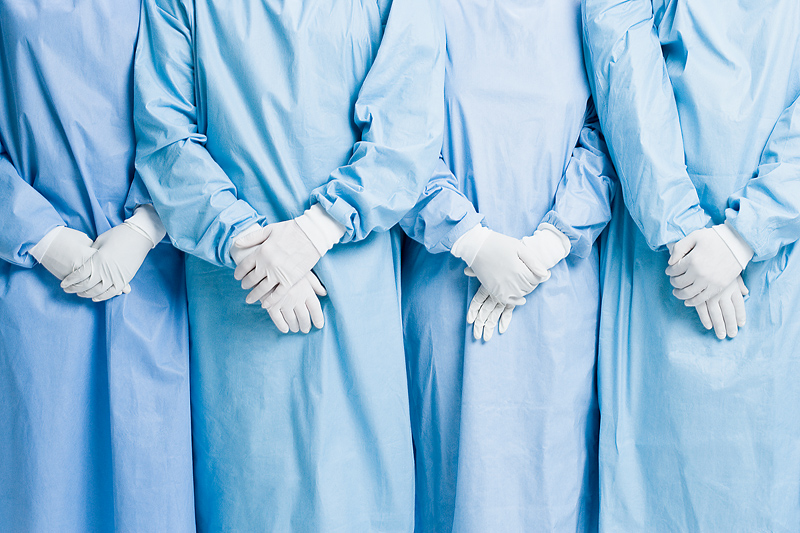Here are some of the latest health and medical news developments, compiled by the editors of HealthDay:
Barbara Bush Dead at Age 92
Former U.S. first lady Barbara Bush died Tuesday evening at age 92.
Her death at home in Houston was announced by family spokesman Jim McGrath in a statement posed on Twitter, The New York Times reported.
She was married to former President George Bush and the mother of former president George W. Bush, making her only the second woman to have a husband and son serve as U.S. president. The first was Abigail Adams, wife of John Adams and mother of John Quincy Adams.
A statement issued Sunday by the office of her husband said that after consulting her family and doctors, Mrs. Bush had “decided not to seek additional medical treatment and will instead focus on comfort care,” The Times reported.
Mrs. Bush was hospitalized with pneumonia in December 2013, underwent surgery for a perforated ulcer in 2008, and had heart surgery four months later.
In January, the Bushes marked their 73rd wedding anniversary, making them the longest-married couple in presidential history, The Times reported.
Mrs. Bush championed causes such as literacy and civil rights. It was rumored that she supported abortion rights but she would not reveal her opinion about her husband’s anti-abortion position.
In a 1994 memoir, Mrs. Bush said she suffered from depression in 1976 after she and her husband had returned from his two-year posting in China, The Times reported.
—–
French Man First in World to Have Second Face Transplant
A man in France is the first person in the world to successfully undergo two face transplants.
In 2010, Jerome Hamon, 43, had his first transplant to treat a genetic disorder called neurofibromatosis, in which tumors grow along nerves in the skin, brain and other parts of the body. However, Hamon’s body rejected that transplant, CNN reported.
Early this year, he underwent another transplant.
“It is his second transplant but his third face,” said transplant team leader Dr. Laurent Lantieri, CNN reported. “This shows that a face is an organ like any organ that can be transplanted and retransplanted.”
Along with medicines to reduce the risk that the second transplant is rejected, Hamon is also receiving mental health support and speech therapy.
Lantieri said that after spending a total of eight months in the hospital, Hamon was discharged for a week to be with his family, CNN reported.
A second successful face transplant is a significant achievement, according to Dr. Maria Siemionow, a professor of orthopedic surgery in the University of Illinois at Chicago College of Medicine who led the first face transplant in the United States in 2008.
“The fact that Dr. Lantieri was able to perform a second face transplantation on this recipient is the first case of its kind for the face transplant field,” she told CNN.
Worldwide, at least 39 face transplants have been performed, according to Siemionow.
——
First Drug for Rare Form of Rickets Approved by FDA
The first drug to treat a rare, inherited form of rickets has been approved by the U.S. Food and Drug Administration.
Ultragenyx Pharmaceutical Inc.’s Crysvita (burosumab) is approved to treat adults and children ages 1 year and older with x-linked hypophosphatemia (XLH), which causes low levels of phosphorus in the blood, resulting in impaired bone growth and development in children and teens and lifelong problems with bone mineralization.
“XLH differs from other forms of rickets in that vitamin D therapy is not effective,” Dr. Julie Beitz, director of the Office of Drug Evaluation III in the FDA’s Center for Drug Evaluation and Research, said in an agency news release.
“This is the first FDA-approved medication for the treatment of XLH and a real breakthrough for those living with this serious disease,” Beitz said.
XLH affects about 3,000 children and 12,000 adults in the U.S. In children, XLH typically causes bowed or bent legs, short stature, bone pain and severe dental pain. Some adults with XLH have chronic discomfort or complications such as joint pain, impaired mobility, tooth abscesses and hearing loss.
A clinical trial found that 94 percent of adults who took Crysvita once a month achieved normal phosphorus levels, compared with 8 percent of those who took a placebo, according to the FDA.
In children, 94 to 100 percent of those treated with Crysvita every two weeks achieved normal phosphorus levels.
The most common negative side effects of Crysvita in adults were back pain, headache, restless leg syndrome, decreased vitamin D, dizziness and constipation. The most common negative side effects in children were headache, injection site reaction, vomiting, decreased vitamin D and fever, the FDA said.
Copyright © 2025 HealthDay. All rights reserved.

